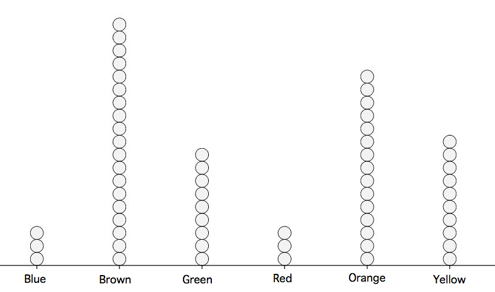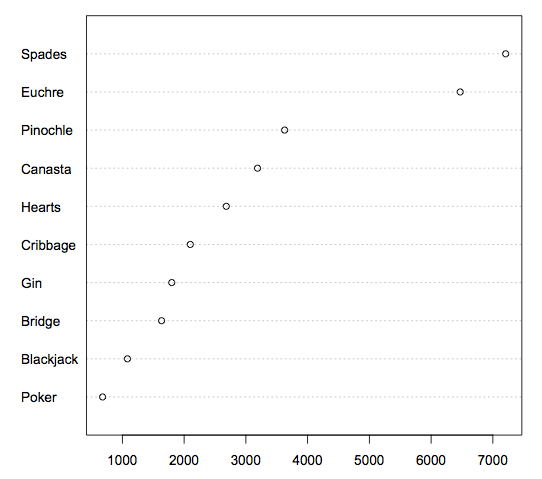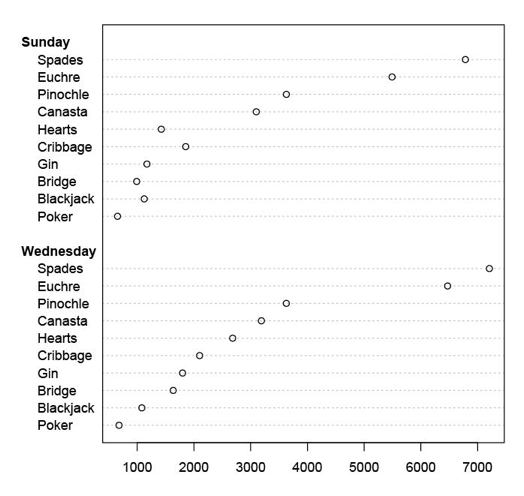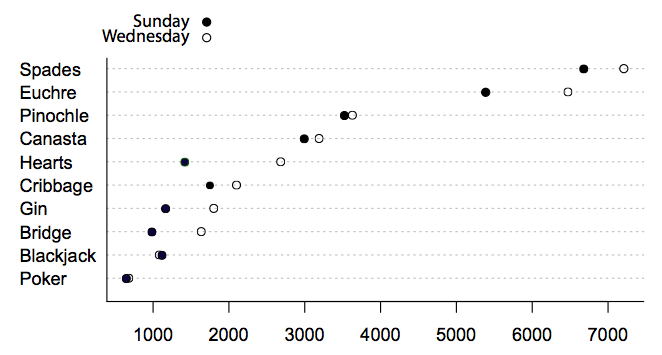2.10: Parcelas de puntos
- Page ID
- 152214
Objetivos de aprendizaje
- Crear e interpretar gráficas de puntos
- Juzgar si una gráfica de puntos sería apropiada para un conjunto de datos dado
Las gráficas de puntos se pueden utilizar para mostrar varios tipos de información. La figura\(\PageIndex{1}\) utiliza una gráfica de puntos para mostrar el número de M & M de cada color que se encuentra en una bolsa de M & M's. Cada punto representa una sola M & M. De la figura, se puede ver que había M & M's\(3\) azules, M & M's\(19\) marrones, etc.

La trama de puntos en Figura\(\PageIndex{2}\) muestra el número de personas que juegan varios juegos de cartas en el sitio web de Yahoo un miércoles. A diferencia de Figura\(\PageIndex{1}\), la ubicación más que el número de puntos representa la frecuencia.

La trama de puntos en Figura\(\PageIndex{3}\) muestra el número de personas que juegan un domingo y un miércoles. Esta gráfica facilita comparar la popularidad de los juegos por separado durante los dos días, pero no facilita la comparación de la popularidad de un juego determinado en los dos días.


La gráfica de puntos en Figura\(\PageIndex{4}\) facilita la comparación de los días de la semana para juegos específicos mientras se siguen retratando las diferencias entre los juegos.


